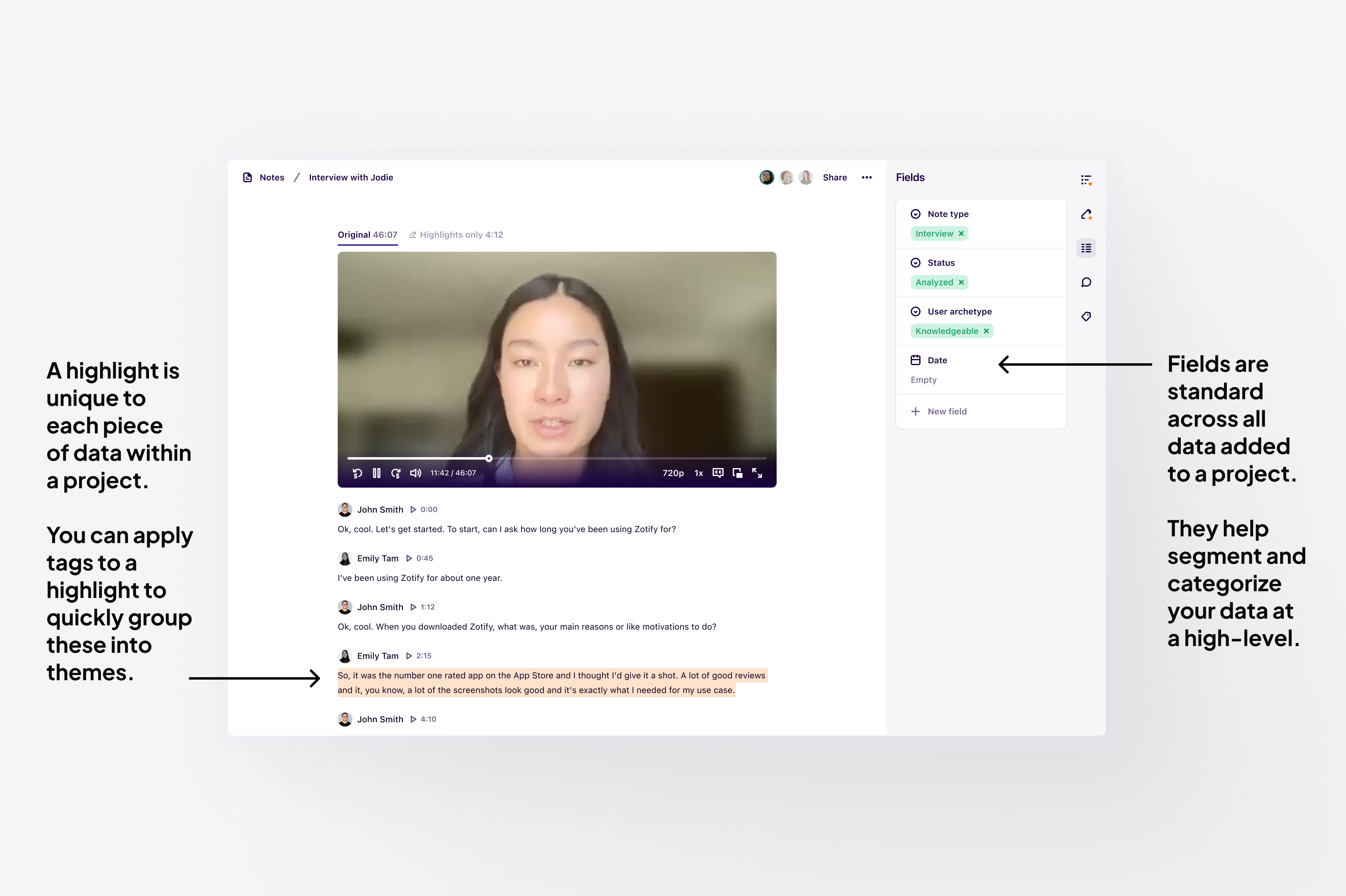Difference between a field and a tag
A tag and a field serve different purposes in your raw data. While tags analyze the content of your data, fields describe the data source itself and provide context around it.Field
- Used to structure and categorize your raw data at a high-level. - - As a field lives across all data in a project, some examples of information you would capture as a field include the research method used, interview date, usability testing score, segment, and net promoter score.
Tag
- Used to group highlights and track themes within a single piece of raw data or across a set of data. - - They help you thematically group bite-size information captured within different pieces of data within a project. - - -

Create data fields for a project
Data fields are useful for categorizing your raw data by research method, interview date, usability testing scores, segment, net promoter score, and more.- To add a field to your data, open a note within your project and click
+ New field. - From there, you can set a title, select a note field type, and enter a value to the note’s field.
- When you add a new field to a note, it will also be added to all other notes in that project. The property added for this field will be unique to the note.
Example of data fields you can use
See table below for some common examples of data fields you could use include to categorize your raw data in projects.| Field title | Field type | Field value examples |
|---|---|---|
| Data | Single select | Interview, Survey, Document |
| Persona | Single or multi-select | |
| Region or Market | Single select | APAC, EMEA, AMER |
| Interview stage | Single select | Scheduled, Conducted, Analyzed |
| Interview round | Single select | Round 1, Round 2, Round 3 |

